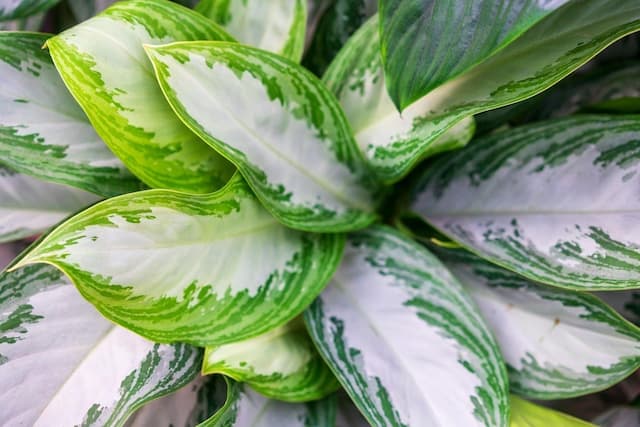Dumb cane 'Camille' Dieffenbachia 'Camille' (v)



ABOUT
Dumb Cane 'Camille' is an evergreen perennial with large beautiful leaves.
Characterized by a beautiful pattern of lanceolate leaves. Dark green or yellow-green in color, they look particularly decorative. The center of the leaves has a creamy white color. With good care, the Camilla spotted diffenbahia can grow up to 5 feet tall.
'Camilla' is one of the most popular varieties.
About this plant
 Names
NamesFamily
Araceae
Synonyms
Dumb Cane 'Camille'
Common names
Dieffenbachia seguine, Dieffenbachia maculata, Dieffenbachia picta
 Toxicity
ToxicityTo humans
The cells of the dieffenbachia plant contain needle-shaped calcium oxalate crystals. These crystals can cause a temporary burning feelings and erythema when chewing the leaf. In rare cases, swelling of tissue exposed to the plant has been reported.
In children, contact with dieffenbachia (usually by chewing) can cause many unpleasant symptoms, including severe numbness, oral irritation, profuse salivation, and localized swelling.
In most cases, symptoms are mild and not life-threatening.To pets
According to the ASPCA, dieffenbachia is toxic to both cats and dogs. The leaves contain calcium oxalate crystals and a proteolytic enzyme that can cause irritation of the mouth, tongue and lips, excessive salivation, vomiting, and difficulty swallowing in animals.
In most cases, symptoms are mild and not life-threatening.
 Characteristics
CharacteristicsLife cycle
Perennials
Foliage type
Evergreen
Color of leaves
Green with white
Height
Up to 3 feet
Spread
Up to 2 feet
Plant type
Shrub
Hardiness zones
10
Native area
South America
Benefits
 General Benefits
General BenefitsImproves indoor air quality;
Best plant to absorb formaldehyde, xylenes and toluene;
Grows well in low light conditions;
Easy to care for;
Has a very decorative appearance. Medical Properties
Medical PropertiesIts sap is used by some peoples as an antidote (irritant) for snake bites, and for the external treatment of rheumatism and gout. It is also used to treat tumors and warts.
However, the plant is best known for its poisonous properties. Dumb cane is used to poison rats and cockroaches and to make poison for arrows. Therefore, do not use this plant in your treatment without consulting your doctor. Air-purifying Qualities
Air-purifying QualitiesDumb cane is on the list of plants from the NASA Clean Air Study.
This houseplant can reduce toxic compounds such as formaldehyde, xylene and toluene.
Interesting Facts
 Feng Shui
Feng ShuiAcoording to Feng Shui, dieffenbachia is best placed in the northeastern part of the house.
Dumb cane is not quite suitable for apartments, it is much more effective to keep this plant in the office. It will have a favorable effect on business negotiations and mental activity. Zodiac Sign Compitability
Zodiac Sign CompitabilityCANCER and LEO
In astrological terms, diffenbahia is suitable for Cancers and Leos. Brings them good luck and sets them up for work. Plant Symbolism
Plant SymbolismDieffenbachia has no clear symbolic meaning. But according to Brazilian folk tradition, this plant protects against negative energy.
 Water
WaterFrom March to September requires moderate but frequent watering. If the temperature is too high, water more frequently (once in 2 - 3 days).
From October to February, watering is reduced (once in 4 - 5 days).
Dumb cane can tolerate a short period of drought, but overwatering is not tolerated at all and may die. Light
LightA shade-tolerant plant. Avoid direct sunlight on Dumb cane.
 Temperature
TemperatureThe best temperature is between 65° F to 80° F, but not less then 60° F.
Keep Dumb cane from cold drafts and cold conditions in general. Pruning
PruningTo keep 'Camilla' in its impressive appearance, it is necessary to get rid of damaged leaves. Pruning is also necessary if Dieffenbachia is growing too fast, which also affects the appearance of the plant. Always wear gloves when pruning as the sap is poisonous. The best time for pruning is early spring.
 Cleaning
CleaningOnce a month
 Soil
SoilDifferent options with a pH of 5.5 are possible, for example a mixture of turf and leaf soil with peat and manure in a ratio of 2:2:1:1.
A "For Dieffenbachia" ready-made soil mixtures are perfect. Repotting
RepottingRepot Dumb cane every 1 - 3 years in the spring as needed. Rubber gloves should be worn when transplanting because the sap of the plant is poisonous and can cause skin irritation.
Repotting is required when the root system fills the entire pot.
With each transplant, the pot should be 4 inches larger than the previous one. If the plant has become too large, it can be divided. When transplanting, the old roots may be cut back (they will be different in color. The young roots are white). Humidity & Misting
Humidity & MistingDumb cane prefers high humidity.
To increase the humidity level, you can mist the plant regularly or place a humidifier, moist moss or pebbles aroud the plant. Suitable locations
Suitable locationsIndoor
All year round
Outdoor
Only in a natural habitat. Does not tolerate temperature extremes and cold air.
Hardiness zone
11 - 12 USDA
 Life cycle
Life cycleRarely do flower growers manage to surround the capricious Dumb cane with such perfect conditions in which it would bloom. But those who are particularly diligent may be lucky and in April or May they may see a creamy green cob flower emerge from a leaf axil.
 Propogation
PropogationPropogation time
May - September
By CUTTINGS:
Carefully remove the cuttings from the mother plant, ensuring that there is a node. Allow the wound to dry slightly, place it on the soil or in water and wait for roots to develop.
Place the container with the cuttings in a warm place (70 - 75° F) away
This can take anywhere from a week to several months.
Be sure to wear gloves because the juice of the plant is poisonous and can cause skin irritation.
 Pests
PestsSpider mite, Diaspididae, Thrips, Mealybug, Aphid
 Diseases
DiseasesRoot Rot









